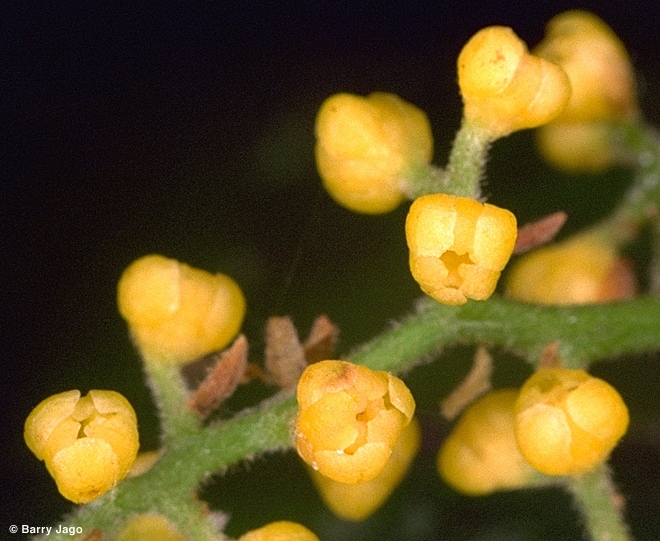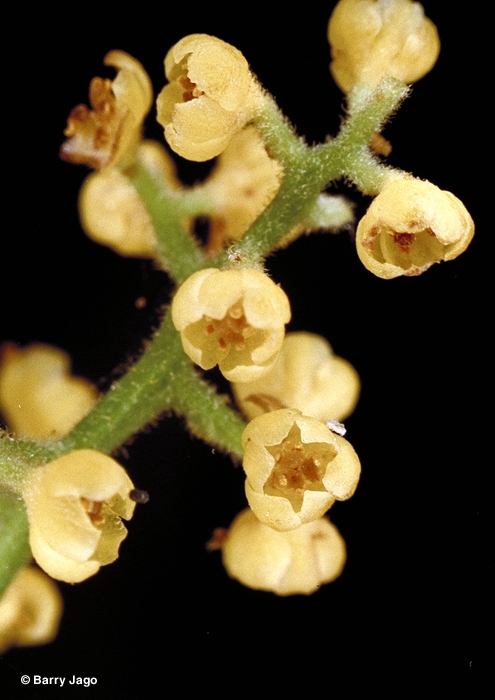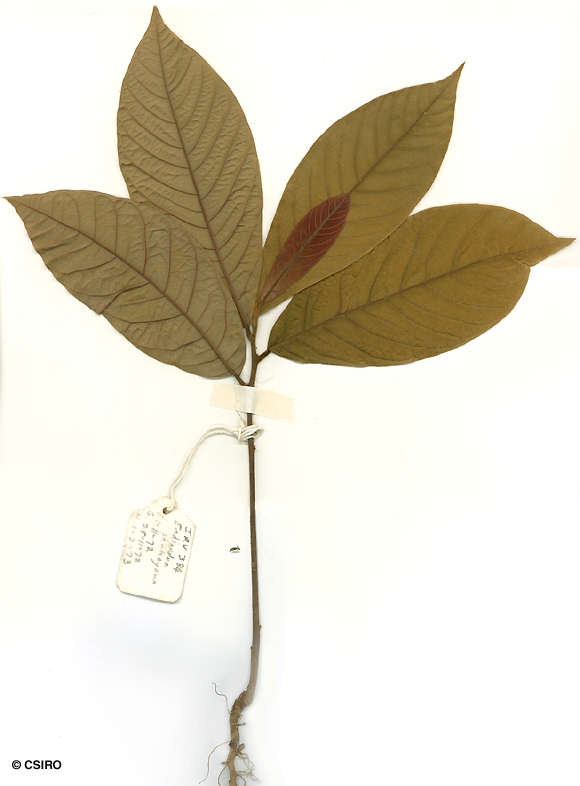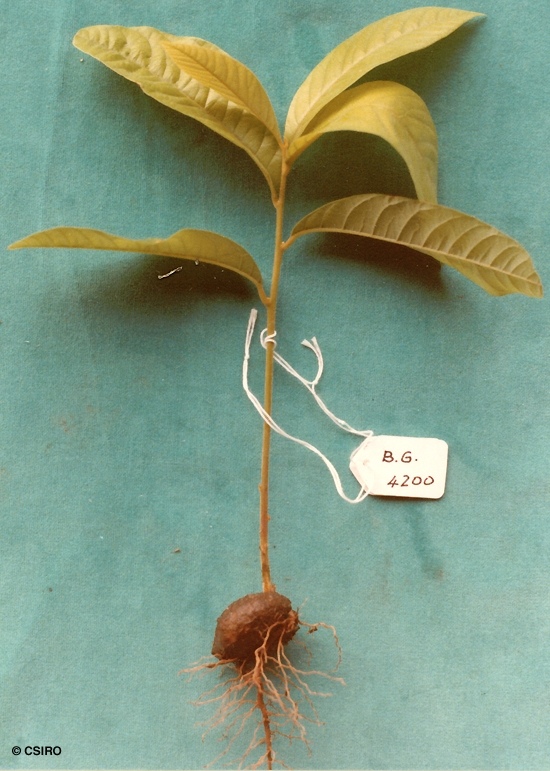Australian Tropical Rainforest Plants - Online edition
Endiandra sankeyana F.M.Bailey










Bailey, F.M. (1893) Queensland Department of Agriculture and Stock. Botany Bulletin 8: 82. Type: Scrubs of the Barron River, E. Cowley.
Sankeys's Walnut; Walnut, Sankey's
A thin cream or pale brown layer normally visible under the subrhytidome layer before the first section of the outer blaze. Blaze odour may resemble guava (Psidium guajava).
Twigs angular or fluted, clothed in straight and tortuous, erect, white or pale brown hairs. Leaf blades about 8-17 x 5-9.5 cm, green or slightly glaucous on the underside, clothed in straight and tortuous, erect, white or pale brown hairs. Midrib and main lateral veins depressed on the upper surface. Midrib hairy on the upper surface. Petioles flat or channelled on the upper surface. Oil dots visible with a lens.
Fruits ellipsoid, occasionally pyriform or globular and laterally compressed, about 33-54 x 27-41 mm. Seed about 23-31 x 15-26 mm. Cotyledons orange or apricot.
First pair of leaves elliptic to slightly obovate, about 50-90 x 19-52 mm, slightly glaucous on the underside. At the tenth leaf stage: leaves obovate, apex shortly acuminate, hairy on the upper surface along the midrib and main lateral veins, slightly glaucous on the underside; terminal bud, petioles and stem clothed in brown, tortuous hairs. Seed germination time 27 to 97 days.
Fallen fruit eaten by Cassowaries and Musky Rat-kangaroos. Cooper & Cooper (1994).
This species sometimes produces millable logs but is seldom utilized. Wood specific gravity 0.76-0.89. Hyland (1989).





